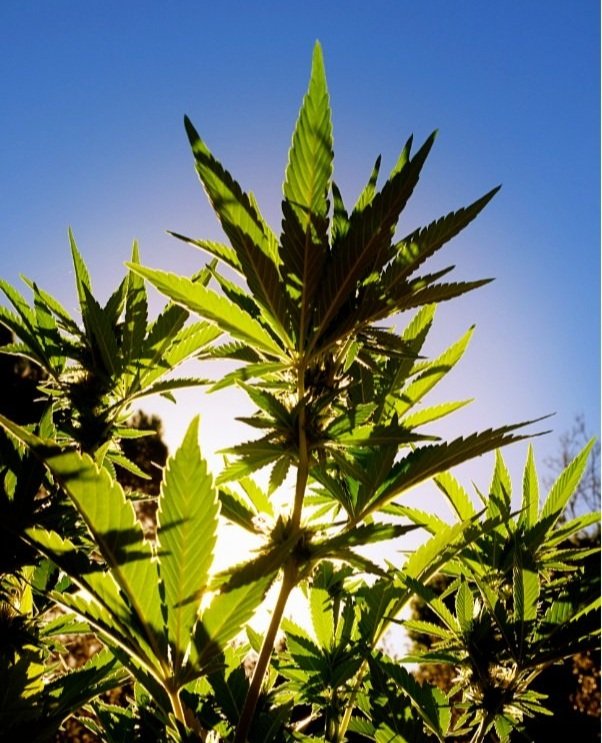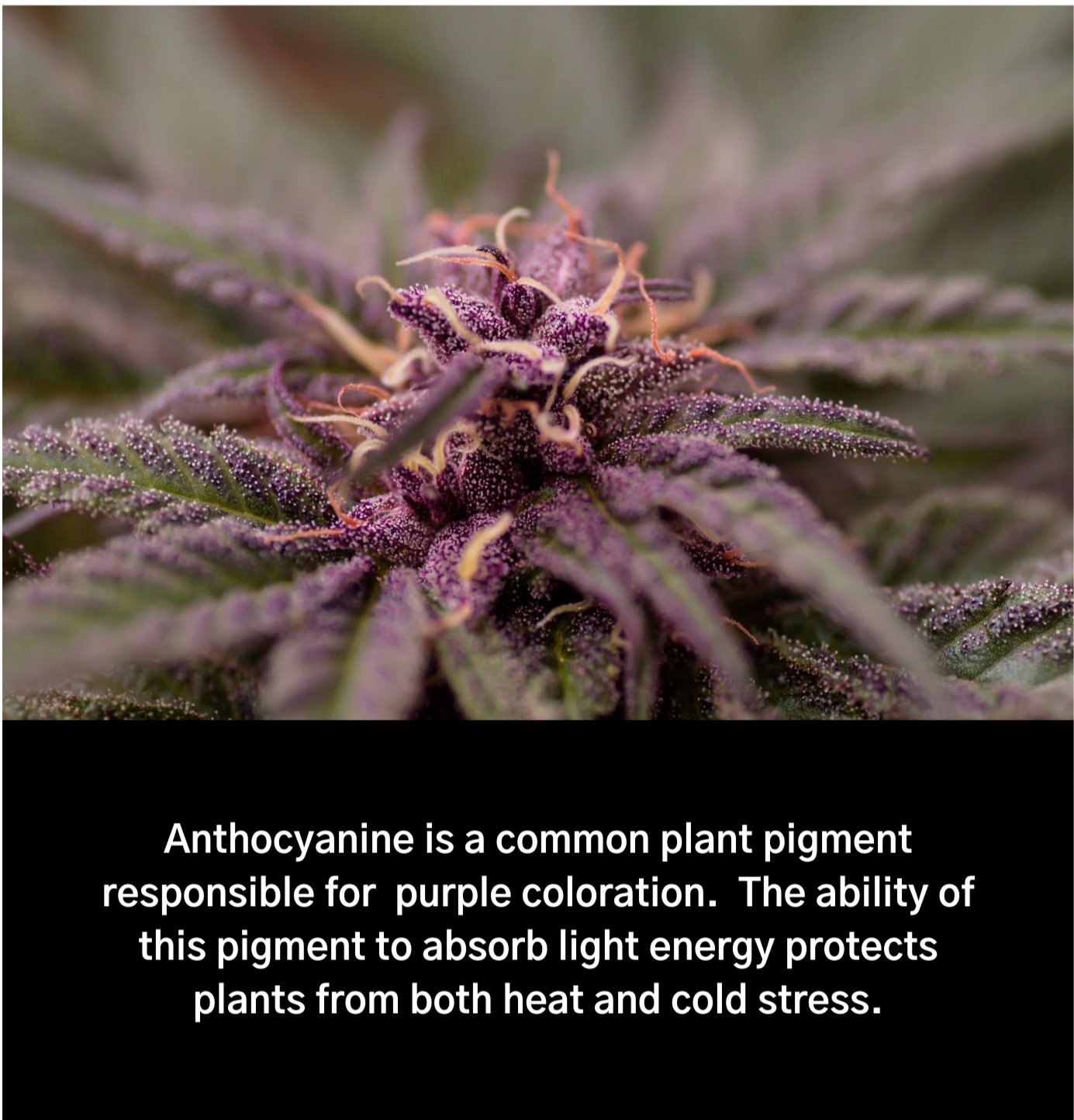Drive Better Yields with Cannabis Crop Steering
What is Crop Steering?
Crop Steering is a horticulture approach that uses management of environment and inputs to promote specific plant responses based on hormone signaling.
Many decades ago, tomato growers noticed that when they provided perfect growing conditions for their plants, they would get beautiful vine and leaf growth, but very few tomatoes.
Under these conditions the plants would continue to grow vegetatively as there were no environmental signals that reproduction, or generative growth was required.
Tomato plants will transition between vegetative and generative growth depending on external stimuli. Greenhouse tomato growers have developed crop steering systems that enable cycling repeatedly between vegetative and generative phases using climate and irrigation signals to direct plant development. This has led to incredible gains in yield.
Many other crops have also benefitted from plant steering strategies including cannabis.
Cannabis Crop Steering
All living beings experience a lifecycle of growth through different developmental phases.
In Cannabis plants these stages progress from propagation to vegetative growth, and generative development or flowering.
These different growth phases are enabled by the plant’s genetic response to environmental stimuli including drought signaling.
Information about the environment is communicated within the plant through hormone signaling systems, and these systems can be directed with climate and irrigation inputs.
The cross talk between hormones and other chemical signaling systems creates a language through which plants can respond to their environment with directed growth.
When growers understand the conditions that promote various development responses from plants, this insight can be used to improve cultivation systems and yields.
Crop steering is a discipline that requires an understanding of plant physiology, and the ability to control, and monitor plant inputs.
Before we get into the tools that we can use to steer our crops through different growth phases, let’s briefly discuss some to the plant metrics that inform our cultivation systems.
Water Balance
During photosynthesis, plants exchange oxygen and water vapor for carbon dioxide.
This process is referred to as transpiration and is enabled by pores in the leaves called stomata.
Plants can regulate this exchange through guard cells which open and close the stomata in response to environmental conditions.
Plants also push water upward through root pressure.
Root pressure relies on osmosis, which is affected by the salinity or EC of the rhizosphere (root zone).
As the media becomes drier, and more saline, the plant has to work harder to uptake water.
Access to water is of existential importance to all life forms, and plants have developed very strong reproductive responses to drought signaling. These generative signaling systems can be activated through irrigation strategy.
Energy Balance
A plant’s energy balance refers to the cycle of production, storage, and use of assimilates during a plant’s various growth stages.
These assimilates are carbohydrates that are acquired through photosynthesis, and which fuel plant growth, and biosynthesis.
Assimilates are also shared with soil biota in the form of root exudates.
Assimilates are continuously synthesized during the photoperiod and are consumed through the generation of biomass.
Leaves which produce more assimilates than they consume by expansion are known as sources.
Plant parts which consume more assimilates than they produce are known as sinks.
Cannabis flowers, roots, and seeds are common sinks.
Plants must continually regulate the use of assimilates to fuel biomass growth and to ensure that adequate reserves are maintained for rainy days.
In a natural environment the cycle of energy balance is closely related to seasonal and diurnal (day/night) changes. In protected agriculture, we can guide plant energy balance through climate management and by shoot and root pruning.
Momentum
Cannabis plants express their confidence in future conditions through complex architecture.
A plant that has plentiful assimilate storage and is vegetating in ideal conditions will build leaf sets with increasing blade counts and size, while a plant that is subjected to stress may form leaves with decreasing blade counts.
This is often one of the earliest indicators that a cannabis plant is experiencing sub optimal growth conditions.
When a plant is heavily pruned, or root bound, it will lose growth momentum until a positive energy balance can be restored. While pruning interventions are necessary for high density cultivation, there are facility costs to maintaining plants that are not actively growing.
Plants that have momentum on their side are resilient, and able to form a strong developmental response to stress priming.
Stress Priming
There is a production cost to stressing your plant, even when there is a benefit to that stress response.
Stress Priming refers to a crops ability to quickly respond to a stressor that it has been exposed to in the past.
Many crop steering techniques rely on stress priming to solicit a desired plant response without the productivity loss associated with stressful growing conditions.
Hormone signaling systems are commonly targeted for this purpose.
An example of stress priming for disease management in cannabis plants is the use of plant-based pesticides like Regalia to initiate plant defenses.
This product stimulates the ISR and SAR plant immune systems through interaction with phytohormones including Jasmonic acid, and Salycilic acid.
These hormones signal to the plant that it is under pathogen attack and enable a protective response.
Entrainment
All organisms that have evolved on this planet encode a circadian rhythm that corresponds with day/night durations. This is an ancient, evolved response and is not dependent on exposure to light.
Plants grown in darkness, creatures from the bottom of the sea, and human liver cells all exhibit a circadian rhythm.
Although the circadian rhythm is entrained rather that acquired, most organisms will adjust and refine their innate rhythm to match the light/dark conditions that they are exposed to.
Adjustment of the circadian clock is enabled by perception of light by photoreceptors.
These are pigments which change their shape or state when exposed to different light conditions.
During darkness, these pigments will gradually revert to their previous states.
The relative states of different pigments at sunrise signals the duration of the dark period or skotoperiod and reinforces the circadian rhythm.
Now that we have waded through a bit of plant physiology, lets dive into some of the tools we can use to steer the development of our favorite plant during various stages.
Propagation
The vegetative propagation of cannabis from cuttings represents a radical developmental shift.
Cuttings are required to move from active assimilation as part of a larger organism to initiation of root primordia, and an independent existence. This hardly seems fair.
This transition is enabled through the management of plant signaling systems.
Growers will expose cuttings to 24-hour low-intensity photoperiods and high humidity during clonal propagation.
These conditions favor root initiation, while lowering plant transpiration demands.
Synthetic auxins, or rooting hormones are often applied to cuttings to speed root formation.
When propagated from seeds, plants will undergo a substantial period of growth prior to reproductive maturity.
Seedlings, and newly transplanted clones, show a significant benefit from feeding with kelp, due to the plant growth factors that are present.
These growth factors are exogenous hormones which are naturally produced and directly benefit plant development, particularly during puberty.
Establishment
When new plants are hardened off, they are transitioned to higher light intensities, long days, and moderate feeding, to establish the root and shoot architecture required for vigorous vegetative growth.
Once a plant has been transplanted and watered in, water should be withheld to encourage root growth throughout the container.
Root pruning pots will promote the development of a fibrous root mass that will quickly colonize new grow media during subsequent vegetative growth.
When roots are well established, mechanical interventions like topping will cause a shift in hormone distribution which will favor growth of lower branches.
There is a growth cost to these interventions, but the structural benefit to plants in high intensity cropping systems is clear.
Pruning
Application of pruning and training techniques on small plants reduces the opportunity cost of lost biomass.
These early interventions can have a big impact on a plant’s future productivity with minimal labor input.
The concept of energy balance should always be considered for timing of pruning and transplant activities.
When a plant is well rooted, it’s significant energy sink, and ability to uptake soil water, enable a quick recovery from pruning of foliage.
When a plant has significant foliage development in relation to its root mass, this positive energy balance will enable faster rooting into new media following transplant.
Vegetative Growth
Once a plant has been transplanted into its final location for vegetative development, an optimal growth environment should be established.
This includes moderate temperature and humidity levels, C02 supplementation and adequate irrigation to promote verdant growth. The difference or DIF between day and night temperatures should be minimized, and 18-hour photoperiods are maintained.
In addition to optimizing photosynthetic efficiency, this environment will signal that seasonal conditions are perfect for vegetative growth, and that winter is not coming anytime soon.
DIF
DIF is a measure of the difference between the highest and lowest temperature over a 24-hour period.
While air temperature is easier to record, the leaf surface temperature of your cannabis plants is the important metric. In many crops, including cannabis, DIF has a direct effect on internodal elongation, or stretch. In a condition where the daytime temperature is 5C above the nighttime low, the DIF would be +5.
Cannabis plants that experience a low or negative DIF will exhibit more compact growth. Negative DIF can be difficult to achieve, and in many cases can limit photosynthetic efficiency due to the lower daytime temperatures required.
Fortunately, it is possible to achieve the plant structure benefits of a negative DIF by reducing temperatures during the first couple of hours of the photoperiod, before returning to a more photosynthetically efficient production temperature for the balance of the photoperiod.
Light Quality
Light quality refers to the spectral composition of light. We perceive this spectral composition as color.
Plants perceive light quality as different wavelengths of radiant energy.
Different light qualities effect plant architecture in various ways. Broad spectrum lighting elicits a positive response from cannabis plants from both a photomorphogenic and photosynthetic perspective.
The spectral composition of sunlight shifts over the course of the growing season, with higher blue light ratios in the summer months, particularly during twilight hours.
Legacy cannabis cultivators often used Metal Halide lights which have a blue-shifted light spectrum for vegetative growth.
This light quality, when provided at appropriate intensity, results in plants with a compact growth habit and is associated with other positive vegetative characteristics.
Flower Induction
Flower induction refers to the application of stimuli required to shift a plant from vegetative to generative growth. Short day cannabis plants are photoperiod obligate and rely exclusively on photoperiod cues to induce flowering.
Many cannabis cultivators have traditionally used 18-hour photoperiods during vegetative growth, and 12-hour photoperiods during flower.
Single, long skotoperiods (dark periods) of up to 24 hours in length have been applied when transitioning to flower.
While this system will stimulate a robust flowering response, it is more like a carjack than a crop steering strategy.
Plants respond well to a more gradual transition to flower.
Photoperiods can be reduced from 18 hours to 12 hours over a week or so.
Light intensity, temperature, and C02 enrichment are increased as the light hours are reduced to maintain a consistent DLI with a shorter photoperiod.
While most cannabis plants are initiated to flower by photoperiod cues, irrigation strategy can still influence the vegetative or generative posture of cannabis crops.
Flower induction should be timed to coincide with plant momentum. When a plant is undergoing vigorous growth and is adequately supplied with resources, it will have a strong response to this reproductive climate.
Hyper Veg
For the first 2-3 weeks following induction, your cannabis plants will undergo vigorous growth in preparation for reproduction.
While this is a response to inductive conditions, plants require resources typical of vegetative growth, including available nitrogen, and plentiful water to support elevated levels of transpiration.
A low DIF is usually maintained during the first few weeks of flower to limit internode elongation.
Flower Expansion
Plant elongation and leaf production will decline as pistils congregate to form complex flowers.
This growth stage coincides with the peak of floral expansion and reproductive viability.
An inductive climate that maximizes photosynthetic potential will promote floral expansion.
Cultivators will often push plants to perform at optimal photosynthetic rates with high lighting and temperature inputs.
Leaf surface temperature should be closely monitored, and the DIF can be increased during mid flower to signal the seasonal closing of the reproductive window.
Irrigation dry-back should increase during mid-flower as part of a generative irrigation strategy.
This combination of environmental cues can be used to indicate the end of the growing season without limiting the photosynthetic resources required during this period of peak flower expansion.
Biosynthesis
During late flower, light intensity can be reduced as your plants shift from biomass growth to biosynthesis.
A plant’s reproductive utility is ending as it enters senescence and the grower’s attention shifts to flower maturation, and preservation of bioactive compounds.
During this development phase, a greater DIF can be applied without concern for plant elongation.
An increase in DIF, and a decrease in 24-hour temps can increase purple flower coloration through promotion of anthocyanin production.
Cooler temperatures can also benefit monoterpene preservation late in the flowering cycle.
Conclusions
Cannabis is not a new crop. This is one of the earliest plants to undergo domestication by humans.
The recent exoneration of the cannabis plant is enabling a revolution in our understanding of its cultivation at commercial scale.
Cannabis crop steering techniques are early in their development trajectory, and growers require sophisticated data collection and precise control of climate parameters to accelerate this pursuit.
You can’t grow fire if you are always putting out fires.
As the novelty of growing weed by the acre transitions to a drive for profitability, cultivators will need to develop increasingly sophisticated strategies to optimize crop productivity.











